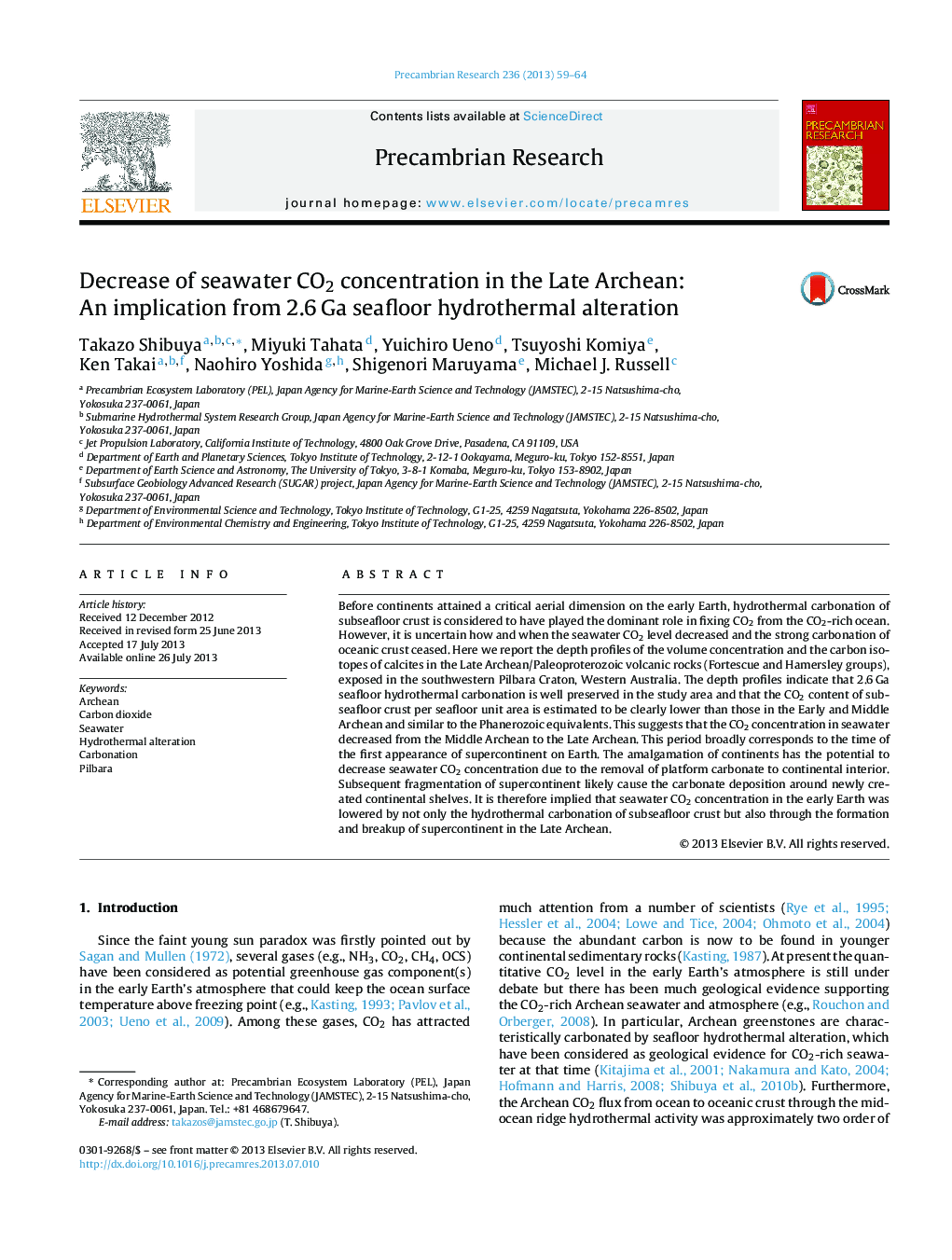| Article ID | Journal | Published Year | Pages | File Type |
|---|---|---|---|---|
| 4723165 | Precambrian Research | 2013 | 6 Pages |
•We present a depth profile of carbonation in the 2.6 Ga seafloor basalts.•Carbon isotope ratio of calcite systematically changes with depth.•Degree of carbonation is lower than those in the Early and Middle Archean equivalents.•Seawater CO2 level likely decreased from the Middle Archean to the Late Archean.
Before continents attained a critical aerial dimension on the early Earth, hydrothermal carbonation of subseafloor crust is considered to have played the dominant role in fixing CO2 from the CO2-rich ocean. However, it is uncertain how and when the seawater CO2 level decreased and the strong carbonation of oceanic crust ceased. Here we report the depth profiles of the volume concentration and the carbon isotopes of calcites in the Late Archean/Paleoproterozoic volcanic rocks (Fortescue and Hamersley groups), exposed in the southwestern Pilbara Craton, Western Australia. The depth profiles indicate that 2.6 Ga seafloor hydrothermal carbonation is well preserved in the study area and that the CO2 content of subseafloor crust per seafloor unit area is estimated to be clearly lower than those in the Early and Middle Archean and similar to the Phanerozoic equivalents. This suggests that the CO2 concentration in seawater decreased from the Middle Archean to the Late Archean. This period broadly corresponds to the time of the first appearance of supercontinent on Earth. The amalgamation of continents has the potential to decrease seawater CO2 concentration due to the removal of platform carbonate to continental interior. Subsequent fragmentation of supercontinent likely cause the carbonate deposition around newly created continental shelves. It is therefore implied that seawater CO2 concentration in the early Earth was lowered by not only the hydrothermal carbonation of subseafloor crust but also through the formation and breakup of supercontinent in the Late Archean.
